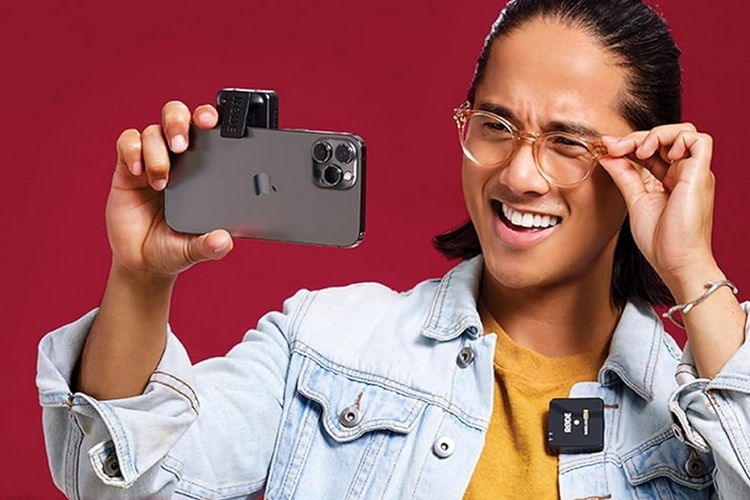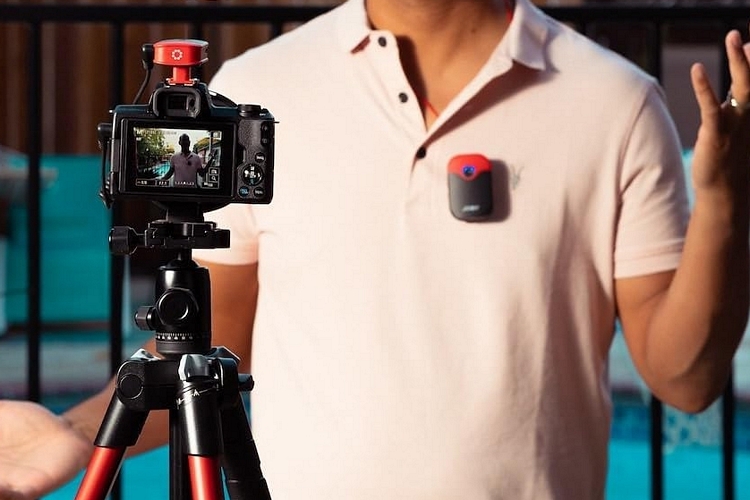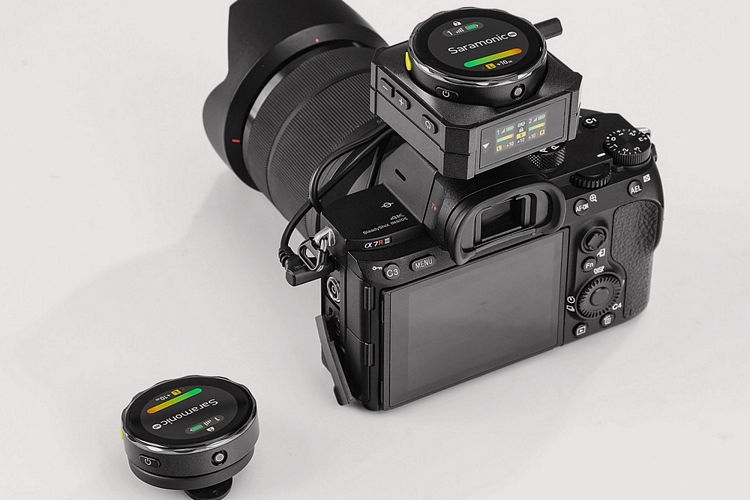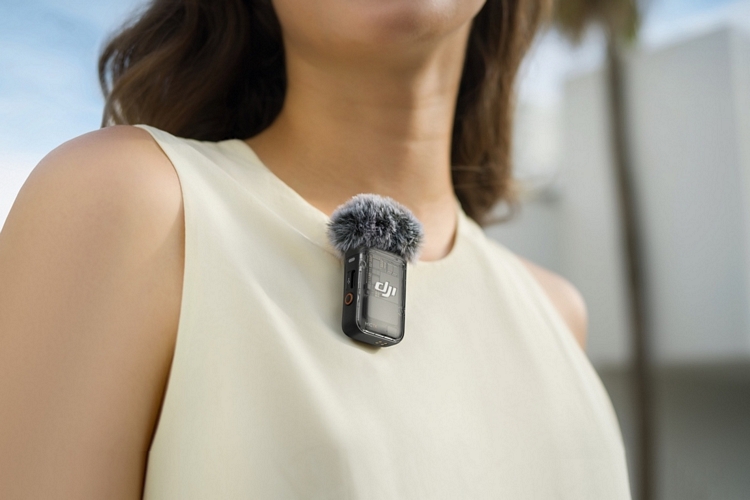
You can make impressive professional-looking videos even from mid-range smartphones these days. Problem is, audio still sounds pretty scuffed even when recorded from higher-end models. External microphones let you bridge the gap, accompanying your high-quality amateur video with equally pristine-sounding audio.
Wireless lapel mics have become a popular choice of microphone for many contemporary content creators. Their clip-on design means you can use them completely hands-free, while the wireless design means it stays completely out of the way. More importantly, these lavalier mics ensure they pick up everything your subjects say consistently, regardless of whe ther the subject is moving or stationary, since they stay attached to their clothing the entire time.
The best wireless lapel mics come in different variants. Some are omnidirectional, meaning they pick up sounds coming from every direction, while others use a unidirectional polar pattern that allows for more targeted voice pickup and much less background noise. Some have a proximity effect that work better for isolating a nearby subject’s voice from the background, requiring them to be placed as close as possible to the subject’s mouth, while others have a more transparent design that allows a greater reach for a more natural sound, allowing them to be placed a little further down.
Most of the best wireless lapel mics have a 3.5mm jack for connecting the transmitter to your mirrorless camera or smartphone with a jack input. If you record on a smartphone that doesn’t have one, you can use a 3.5mm to USB-C (or Lightning) adapter cable. Suffice to say, setup shouldn’t be that much of a challenge, regardless of which make or model of wireless lavalier mic you go with.
These are the best wireless lapel mics to bring high-quality audio to your video productions.
Joby Wavo Air

Pros
- Excellent sound quality for the price
- Comes with wind shield and smaller lapel mics
- Effective at claimed 50m range
Cons
- Light plastic build
- Sound occasionally gets out of sync
Polar pattern: Omnidirectional
Maximum SPL: 120dB
Maximum distance: 50 meters
Battery life: Six hours
For amateur content creators just looking to add better audio to the videos they upload to YouTube and other platforms, a cheap wireless lapel mic will be more than enough to get the job done and Joby offers one of our favorites in the sub-$100 category. As you might expect from an inexpensive mic, it doesn’t have the most premium features. For instance, the build is cheap plastic and the transmission range is very limited (only 50 meters), but it captures impressive sound on par with more expensive mics, provided you stick within the prescribed distance.
It comes with one receiver and two transmitters, with the latter two each having an omnidirectional mic built-in, so you can clip the transmitter directly to your lapel or snap it on the bundled magnetic pendant. If you prefer a more discreet setup, it also includes a pair of slim lavalier mics that you can clip to your lapel and plug into the transmitter. There’s a LED wheel indicator to show sound pickup levels and built-in buttons for quickly making adjustments on the fly. Do note, the two transmitters only record audio on a single channel, so you need to make sure they’re at the same level from the onset.
Saramonic Blink Me Two-Person Smart Wireless Mic

Pros
- Onboard recording capability
- Safety track recording
- Excellent software-based noise reduction
- Transmits well through solid obstacles
Cons
- Not discreet at all
- Big and heavy
Polar pattern: Omnidirectional
Maximum SPL: 110dB
Maximum distance: 100 meters
Battery life: Six to eight hours (transmitter), 25 hours (receiver)
Saramonic’s mid-priced wireless lapel mic strikes a great balance in price and features. For instance, it doubles the transmission range of our budget model, while coming with an onboard recording feature that stores your voice recordings right on the device, ensuring you have a backup in the event of dropouts. There’s a decent amount of storage space, too, allowing you to keep up to 22 hours of 48kHz/16-bit audio at a time, complete with a -6dB secondary track for fixing any distortions. They even threw in windshields and software-based noise reduction, allowing it to produce downright professional-quality sound. Do note, activaing the noise reduction uses up more power, cutting down the battery life to six hours (eight hours without it).
We also love the large colorful touchscreens on the transmitters, which give them a really unique look, although they do give the mics a really conspicuous appearance as opposed to the more discreet styling of other designs. You can even customize the controls on the transmitter touchscreen using the companion app.
Hollyland Lark Max

Pros
- Long distance transmission
- No dropouts even with obstacles
- Onboard recording
- Onboard DSP and noise reduction
Cons
- No physical level buttons on the transmitter
Polar pattern: Omnidirectional
Maximum SPL: 128dB
Maximum distance: 250 meters
Battery life: 7.5 hours
With a 250m transmission range, this wireless lapel mic allows you to record at a very substantial distance from the receiver without any dropouts, all while being able to transmit effectively through solid obstacles like walls. It has a high signal to noise ratio of 70 dB, allowing it to capture voices clearly and accurately, as well as high maximum SPL of 120dB minimizing the instances of distortion or audio clipping. There’s a DSP onboard, too, for further enhancing the audio signal quality, ensuring everything is recorded cleanly with impressive clarity, as well as environmental noise cancellation that processes out any background noise when recording in challenging locations.
Like the Saramonic above, there’s onboard recording, so you don’t lose audio even during dropouts, with each transmitter able to store 14 hours’ worth of audio. The transmitters and receiver come with a storage case that doubles as a charger, which we find extremely convenient. The only real downside here is the lack of physical level buttons on the transmitters, requiring you to use the touchscreen for that.
Rode Wireless Go II

Pros
- Two-channel recording
- Reliable transmission with broadcast-quality recording
- Discreet-looking
Cons
- No physical controls on transmitters
Polar pattern: Omnidirectional
Maximum SPL: 120dB
Maximum distance: 200 meters
Battery life: Seven hours

An improved version of the original Go, this wireless lapel mic comes with a greater range of 200 meters, a new 2.4GHz transmission protocol, and dual-channel recording, allowing you to record each transmitter individually for mixing later in post-production. If you’d rather merge the transmission into one channel, you can opt to use the other one as safety, which will prompt the device to record the same audio at 20dB lower, serving as protection in case of clipped recordings.
It has onboard recording up to seven hours uncompressed, although you can expand that to 43 hours in compressed mode. We also love the windshields included on this mic, as they really lock in place even when they get knocked or bumped. There are no controls on the transmitters other than a power button, so you can’t make on-the-fly adjustments right on the device. Instead, all changes need to be made from the receiver’s small touchscreen or the companion app. Yes, it’s not as convenient as having physical buttons or dials onboard, but we do appreciate that the lack of controls make it more discreet than most wireless lapel mics around.
DJI Mic 2

Pros
- Premium build and features
- Physical and touchscreen controls
- 32-bit float point recording
Cons
- Touchscreen a bit too small
Polar pattern: Omnidirectional
Maximum SPL: 120dB
Maximum distance: 250 meters
Battery life: Six hours plus 12 more in the charging case
The second generation of DJI’s wireless lapel mic feels hefty with a solid construction, making it feel like the kind of device you want to have in a professional production. The big selling point here is the 32-bit floating point audio, which really helps eliminate instances of distortion and clipped sound levels, complete with the option for a -6 dB safety track for a more traditional approach. There’s also onboard recording (up to 14 hours at 24-bit quality) and AI noise cancelation, so this is a complete package. As expected, peerformance is stellar, as it recorded broadcast-quality audio without much effort on our part even in noisier environments. We love a bunch of the new additions to this second generation, such as the rotary dial controller, better battery life, included adapters, receiver presets, and Bluetooth connectivity that lets it pair with various DJI cameras.
Shure MoveMic

Pros
- Can record directly to phone in good quality
- More portable than others
- Good DSP and noise cancellation
Cons
- No onboard recording
- Lack some features for the premium price
Polar pattern: Omnidirectional
Maximum SPL: 130dB
Maximum distance: 100 meters (Bluetooth), receiver range unlisted
Battery life: Eight hours
The big selling point for this wireless lapel mic is the fact that you can use it to record phone audio without needing to use the receiver. Instead, you can do that by simply launching the companion app, where you can adjust all the various mic settings, making it easier to use than anything else out there. Plus, audio quality is great even when recording directly, allowing you to leave the receiver at home when you go on the road. Do note, they use Bluetooth for transmission when using directly with a phone, so range is limited (100 meters) and it doesn’t perform well without direct line of sight. If you want to record on other cameras, you simply want longer range, you want to record on your phone using other apps, you’ll need the accompanying receiver.
The transmitters themselves are very compact and inconspicuous, making them barely noticeable when worn on your clothing, with good battery life allowing you to record up to eight hours between chargers. They’re IPX4 rated, too, so you can keep them on even in the rain. However, the mic doesn’t have onboard recording, so you’re screwed during dropouts. The windshield isn’t all that good, either, requiring you to activate the software noise cancellation to really clean up the recordings.